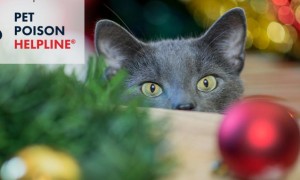Peritonitis in Cats: Understanding Causes, Symptoms, and Treatments
Peritonitis, an inflammation of the peritoneum, the lining of the abdomen, is a critical condition in cats that can quickly become life-threatening if not addressed promptly. The peritoneum plays a vital role in protecting the abdominal organs and providing a barrier against infections. Understanding peritonitis, its causes, symptoms, and treatment options can help cat owners act quickly should their feline companions exhibit signs of this serious condition.
Causes of Peritonitis
There are several potential causes of peritonitis in cats, which can be broadly categorized into infectious and non-infectious origins:
-
Infectious Causes: Bacterial infections are a common source of peritonitis in cats. These infections can arise from various sources, including:
- Trauma: Penetrating wounds, such as bite wounds or surgical complications, can introduce bacteria into the abdominal cavity.
- Digestive Disorders: Conditions like pancreatitis, intestinal perforations, or abscesses can allow intestinal bacteria to leak into the peritoneum, leading to infection.
- Viral Infections: Feline infectious peritonitis (FIP) is a viral disease caused by a mutated strain of the feline coronavirus. FIP can lead to the accumulation of fluid and inflammatory cells within the peritoneal cavity, contributing to peritonitis.
-
Non-Infectious Causes: Non-infectious inflammation of the peritoneum can occur due to:
- Chemicals: The introduction of irritants or foreign substances, such as bile or urine, into the abdominal cavity can provoke an inflammatory response.
- Pancreatitis: Inflammation of the pancreas can lead to digestive enzymes leaking into the abdominal cavity, causing irritation and resulting in peritonitis.
Symptoms of Peritonitis
The symptoms of peritonitis in cats can vary based on the severity and underlying cause of the condition, but common signs include:
- Abdominal Pain: Cats may exhibit sensitivity when their abdomen is touched or may adopt unusual postures to alleviate discomfort.
- Vomiting: Repeated vomiting can occur, often accompanied by a lack of appetite or lethargy.
- Diarrhea or Constipation: Gastrointestinal disturbances are common in cats with peritonitis. Some cats may experience diarrhea, while others may become constipated.
- Fever: An elevated temperature can indicate an underlying infection.
- Rapid Breathing or Heart Rate: Distress and pain can lead to increased respiratory rates and heartbeats.
- Ascites: The accumulation of fluid in the abdominal cavity may lead to visible bloating, depending on the severity of the condition.
Diagnosis
Diagnosing peritonitis involves a combination of physical examinations, diagnostic imaging, and laboratory tests. A veterinarian will typically perform:
- Physical Examination: Evaluating the cat’s abdomen for swelling, sensitivity, and other anomalies, as well as checking for vital signs.
- Blood Tests: A complete blood count (CBC) and biochemical profile can help determine the presence of infection, anemia, and organ function.
- Ultrasound or X-rays: Imaging studies can reveal fluid accumulation, organ abnormalities, or other indications of underlying causes.
- Fluid Analysis: If fluid is found in the abdominal cavity, a sample may be collected and analyzed for the presence of bacteria, inflammatory cells, or cancerous cells.
Treatment
The treatment of peritonitis in cats often requires immediate veterinary intervention and may involve several approaches:
-
Stabilization: Intravenous (IV) fluids are often administered to stabilize the cat, particularly if dehydration or shock is present. Pain management and supportive care are also critical.
-
Antibiotics: If a bacterial infection is suspected, broad-spectrum antibiotics may be initiated to combat the infection while further tests determine the appropriate specific treatment.
-
Surgery: Many cats with peritonitis may require surgical intervention to remove the source of infection, such as abscesses, perforations, or foreign bodies. Surgery can also involve flushing the abdominal cavity to remove infected fluid and reduce inflammation.
-
Managing Underlying Conditions: Addressing any underlying health issues, such as pancreatitis or a gastrointestinal disorder, is crucial to prevent recurrence.
-
Follow-up Care: Continual monitoring and follow-up appointments are essential to ensure the cat is recovering appropriately and to manage any complications that may arise.
Conclusion
Peritonitis is a serious condition that requires prompt recognition and treatment. Cat owners should be vigilant for symptoms of abdominal pain, vomiting, and lethargy, and seek veterinary assistance quickly if they suspect their cat may be suffering from this potentially life-threatening condition. With timely diagnosis and appropriate intervention, many cats can recover from peritonitis and return to their normal lives, highlighting the importance of both awareness and prompt veterinary care.





